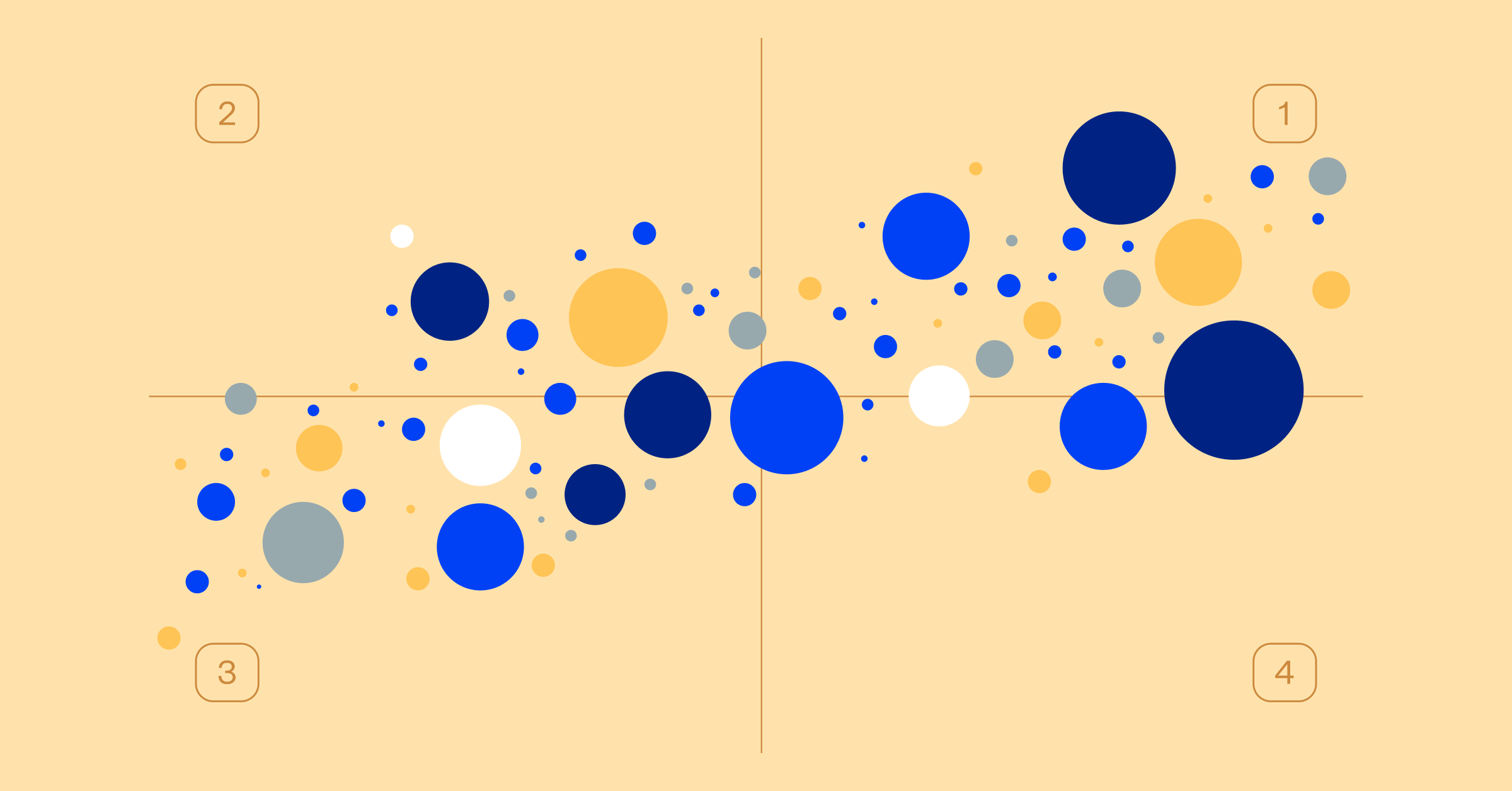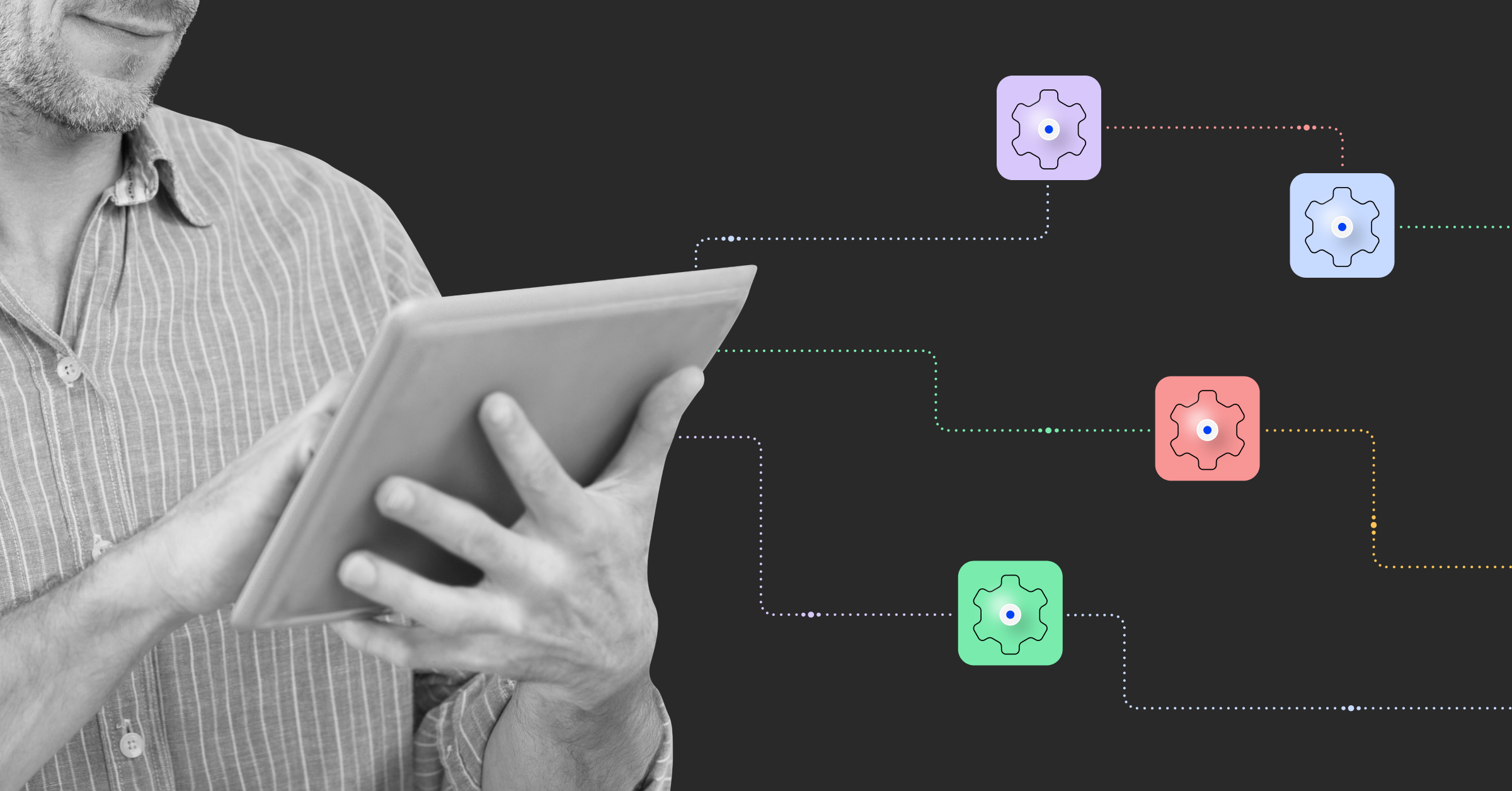Four ways tech will evolve in 2023

Will AI end up emphasizing the importance of human emotions?
What’s next for company operating budgets?
Is a reckoning coming for managed service providers (MSPs)?
We invited an expert panel to discuss all of this and more:
- William Connors, IT director at the Noble Group
- Mark Swartz, co-founder and co-CEO at Qtis AI
- Nigel Peacock, fractional IT leader at a global charity brand
They shared the top IT trends they’ve seen in their industries and how they expect those trends to play out in 2023. We discussed potential changes in staffing models, predictions for the global economy, and the exciting ways they see tech evolving in 2023.
1. IT operating models will evolve with AI
Every real tech prediction includes AI. As Microsoft’s ChatGPT amassed more than 100 million users within its first two months, it sparked feverish excitement about all the AI possibilities to come.
Connors sees AI bringing about better end-user experiences and more personalized advertising. He envisions AI marketing like the scene in 2002’s “Minority Report”, where Tom Cruise’s character walks through a public hallway full of personalized ads that recognize him and even use his name in their pitches.
“That, to me, I think is what we’re arriving at now,” Connors said. “You’ve got loads and loads of data in the background, but… you can actually use that data to enhance the person’s experience on a personal level.”
As for user experience, Conners points to things like advanced ordering kiosks at fast food restaurants, which could use AI to tap into data and offer personalized ordering recommendations based on previous orders and ordering patterns from similar customers.
“All these great engines in the background are making use of this new technology to give you a better experience and also, too, it’s giving the companies running these software programs a better insight into your tastes,” Connors said.
Peacock believes that AI and machine learning will help with repetitive tasks, including with IT teams.
“I’m such a firm believer in the Pareto principle, the 80-20 rule, where 80% of the outcomes come from 20% of all of the incidents or the causes, right? So if you can automate those, you’re relieving a lot of stress within the service desk, within incident and problem management as well,” he explained.
He views it as a stress reliever within service management, and he’s already seeing this in action. For example, there are platforms currently available that use AI to provide service desks a very holistic view of an environment.
“The benefit of that is huge to resolving agents,” he said. “Anyone out there in L1 and L2, they want to see everything that’s impacted by an incident that may come across their desk. And without these platforms, it’s very much a kind of a peck and sniff as they go hunting around the world trying to find out all of those impacts and effects. With these platforms… they give you a one-stop shop, which means that the resolving time, the time spent on those incidents is vastly reduced.”
Swartz said that the technology that he’s seeing make the biggest impact within the AI space is generative AI, which is exactly what it sounds like: AI generating data in a tabular format or in an imagery format for computer vision models.
“The data never stops, and it’s only increasing,” Swartz said. “Within the next probably a year or two, you’ll see so much more data arriving into the systems from generative platforms.”
While the data sounds great, the real question will be how humans will determine whether or not they can trust it.
Swartz shared a hypothetical example of a CXO at a cost center getting a report with an anomaly in the value. In this example, the value was generated automatically through a formulation, but another formula from a legacy system interfered, creating a mismatch. The CXO realizes something doesn’t add up, and the result is what’s called a “data trust fall.”
“So, decision-making will rapidly evolve into the trust fall, like the data trust fall,” Swartz said. “So, if AI is answering, is it the right answer? Or if it’s sending data, is it the accurate data? Everybody will have to get through this.”
2. Changes in human operating models
The question many people are asking about AI is how all of this will impact humans. And more specifically, staffing needs.
“One constant, no matter what country we’re talking about, I know in the UK, especially, there’s a severe need of staff and the staff that are available, they’re very demanding and it’s sometimes very difficult,” Connors said. “If you do not wow them with a great environment, they’re not going to stay. And we’re actually falling back more and more on technology to actually remove the manual labor in all the tasks.”
In restaurants, that means the ordering kiosks installed to improve user experience also will replace paid staff.
“The technology in the kiosks, it gives you suggested ordering,” Connors explained. “So it’ll say, ‘Hey, why don’t you order this?’ So before, you would actually pay someone to be a maître d’, you would pay someone to be a sommelier and figure out the wines. Now you can rely on technology… So the person the restaurant is paying can actually act like they’re a maître d’ or act like they’re a sommelier, while requiring much less training and a lower salary.”
While there’s a lot of promise in AI, Swartz encouraged companies to be cautious about choosing it over a person, because eventually they may realize that the human was actually better.
Swartz said his first instinct was that AI would evolve beyond the need for humans. For example, for all of the inputs that you can gather from a service desk Level 1, you can create a model around that. Then, hypothetically, every time you do, you reduce human staff by a certain percentage.
“As the humans are resolving problems, they’re going to give feedback into the loop that you can build a model off of, and you no longer need that individual to answer that question,” Swartz said.
However, eventually, you always hit a point where you need human input because there are just too many asymmetrical questions and variables.
“I am guessing, this is a guess, but I’m going to think that people of all positions within a company will be asked to join meetings that they thought they were never supposed to join, and they will not know why they’re there,” Swartz said.
“And my point being is they’re asked because there is an inability for AI to gather all the data. Can we all trust an ITIL, right? We all heard data silos, data lakes, data oceans. Corollaries can’t happen. So we process petabytes of data, and we can’t find corollaries across some silos that are just a $2 billion company. I really believe the only way to capture and solve that will come down from the McKinseys and all the big consultancies to get people cross-pollinated in meetings,” Swartz said.
For all its magic, AI also still can’t quite read human emotions and sentiments, Peacock reminded. So when people are submitting IT tickets, companies still need staff to interpret human sentiment to determine what’s urgent and what’s not.
“There’s an inherent need to have humans involved,” Peacock said. “The information that we have at our fingertips through a lot of ITSM platforms is somewhat binary and doesn’t necessarily summarize empathy and sympathy… and more importantly, sentiment.”
The true AI gold ticket would be if someone could teach AI to read tone of voice and overall emotional state. So for example, if a call for service comes in, the AI would be able to give some data on the state of the call’s voice and urgency.
“I truly believe that if we could develop a means for AI to synthesize the sentiment of the caller, of the customer, and allow them, the resolving agents, to tap into that information, it would adjust the way they respond to it,” Peacock said. “Because it’s not always a binary, it’s not always like the IT crowd turning it off and turning it back on again, right? There’s nuance in there.”
3. Global trends in the economy
All these exciting emerging technologies cost money though, and the panel had mixed input about what they’re observing with IT budgets.
Connors said he’s seeing increases in IT budgets, partly because both consumers and organizations are embracing the need for new technologies.
“It’s getting better on all sides,” Connors said. “Customers are embracing technology. Five years ago, you never would have had anyone pay with their mobile phone. All of a sudden now, it’s becoming commonplace.”
As for corporations, in the past, you’d have different departments within a company not wanting to include IT in the conversations, but that’s finally changing.
“Now the technology is becoming the central focal point,” Connors said. “So instead of there being a dedicated marketing division and a dedicated operations division, IT is… getting their fingers in everything. So I think people are finally realizing that technology is your friend and technology is a channel to improve sales and also to improve business intelligence all around.”
Swartz said he’s also seeing increased budgets as the demand to incorporate automation grows. Most of his customers are in medical, healthcare, biology, and life sciences, and all of them are seeing increased R&D budgets and increased IT budgets.
While people tend to assume that a shift to automation means a headcount reduction, Swartz said that’s not exactly accurate. Rather, what automation actually does is shift capabilities from one person or place to another by allowing staff with less training to take on new roles.
“The budgets are not shrinking by any means, and I think there would be no reason for them to because everybody sees the benefit of what’s happening,” Swartz said.
However, Peacock, who works in the non-profit sector, has not seen the same increase in IT budgets.
“Yes, of course, within the dot org world, it’s always going to be more limited, but even more recently in a commercial world as well. I haven’t actually experienced budget expansion, and I’ve seen static budget growth, if you want, but certainly not expansion,” Peacock said.
What Peacock has seen though is organizations demanding that staff do more with what they have—to the point that it’s created unrealistic expectations around AI.
“There’s still a high degree of magical thinking from certain quarters of a company,” Peacock said.
For example, a company will ask if AI can cure one of their problems, and when he says yes, they expect instant results. But it doesn’t work like that.
Swartz agreed, saying corporations seem to believe that there is an AI black box out there somewhere that solves everything. He said they get calls every day from executives asking AI to do things beyond its capabilities because they’ve seen all the amazing AI-related news stories. In short, there’s sort of an AI fantasy right now, where companies think it can do everything.
“There’s a lot of that misconception of what AI can do,” Swartz said. “It can chat with you, [but] it can answer things incorrectly still. It cannot give you the sentiment response that it should give you because it can’t analyze accurately the tonality of the [human] voice.”
Connors is hopeful that even if AI does only succeed with certain types of tasks, it will still create a better world for humans.
“Everyone is going to be expected to make more with less,” Connors said. “And there’s no better example than technology where you’ll have less people doing uninteresting manual tasks, and you’ll have more people in much more data-driven service-type roles, which will improve the customer experience, and [result in] less people basically punching numbers into a box. It’s actually, in the whole scheme of things, better for all of humanity.”
4. Emerging technologies
All three guests also shared some emerging technologies that they’re excited to see evolve in 2023.
How AI could save companies millions in credit card fees
Connors lit up while explaining how new technology is helping companies cut back on credit card processing fees—a big deal in his industry, which is hospitality.
“You look at the balance sheet at the end of the day, at least for the industry that I’m in, you’ll see that the biggest winners, no matter all of our efforts, are the credit card companies because everyone is paying with credit cards and the credit card fees are enormous,” he explained.
Enter the payment orchestration layer. It allows multiple merchant IDs for credit card transactions, which are then processed through AI to find the cheapest option. They can save companies as much as 20% on their credit card processing costs.
That’s not the only emerging tech in that space though. Direct banking is also helping companies cut back on credit card fees.
“You basically bypass the credit card transactions altogether, and you’re just going directly from the merchant into the consumer’s bank account,” Connors explained.
How much money are we talking? Well, for a small company, it could be thousands of dollars per year. But for large companies, it can be tens of millions of dollars.
“That’s one area where I think it’s already permeating into the larger online retailers,” Connors said. “And I think it’s going to make its way into the smaller businesses as well.”
Medical trials could get faster and cheaper
Swartz was excited to discuss the impact of emerging tech in the medical field and, specifically, clinical trials, which can take about four years to complete and cost millions of dollars. AI could make the trials shorter and less expensive.
“There’s been a promise for over 10 years to do decentralized studies to lower the cost by 50%, which never happened,” Swartz said. “They can’t get blood lab results, they can’t get sensory ratings, they can’t do telemedicine correctly.”
He predicts that by the beginning of 2024, they will have found a way to heavily automate parts of the clinical trial process with computer vision and other sensory systems. That could mean new therapeutics could be developed much faster. And ideally, that would result in lower pharmaceutical costs, assuming companies pass those savings on.
“We see that as a huge technology shift,” he said.
A reckoning is coming for managed service providers
As for Peacock, he thinks 2023 could bring a needed reckoning for managed service providers.
As it stands, there are two sides to the issue. On one hand, some of the companies that work with MSPs think that an MSP is going to come in and magically solve all of their problems with very little input or management from the customer.
On the other hand, MSPs will often come into an organization with what they believe the organization needs, and then they’ll structure a solution around that. But oftentimes, they don’t end up delivering what the customer actually asked for.
“I’m seeing it start right now,” he said. “The day of reckoning, I believe, will come when customers of MSPs understand that an MSP needs to be managed and needs to be given direction and clear objectives. And the MSPs, in turn, understand that they really need to go beyond just a work order when they get into an engagement and truly understand the customers’ needs.”
Once that happens, he predicts that there will still be a very strong market and need for MSPs.
“Maybe some customers will realize that they need to step up on the way that they manage the MSP and, in turn, gain efficiencies and cost savings because of that as well,” Peacock said.




